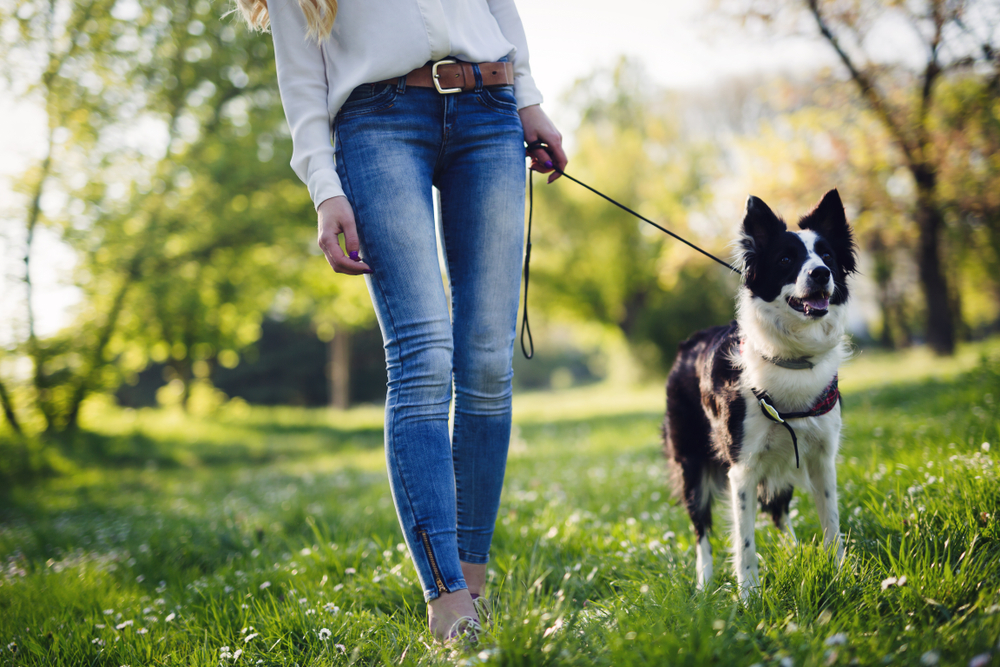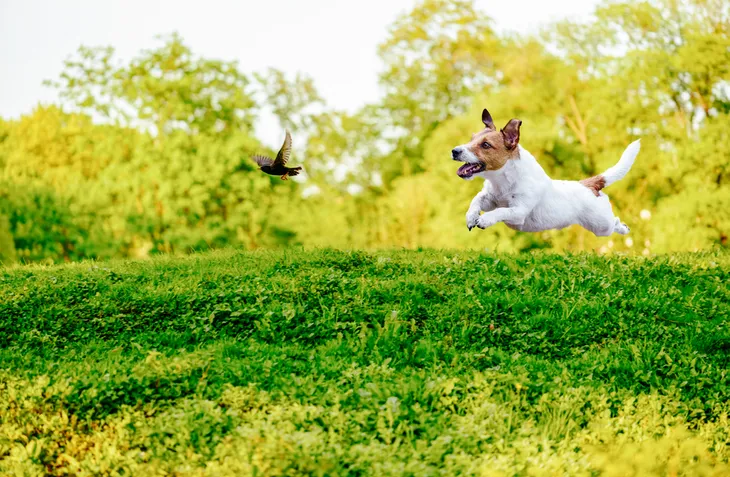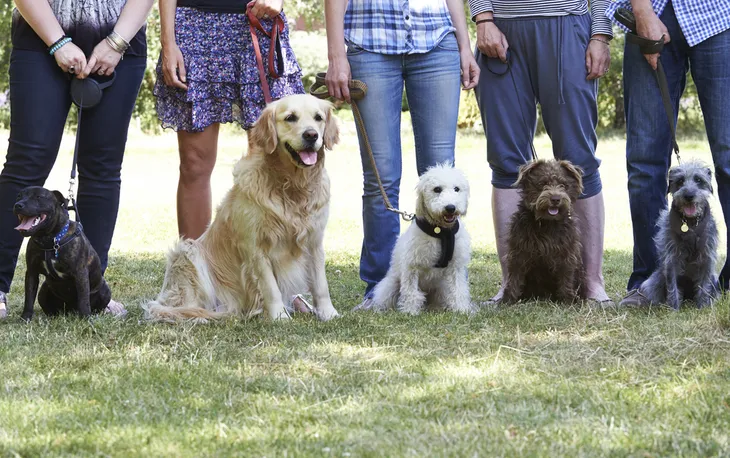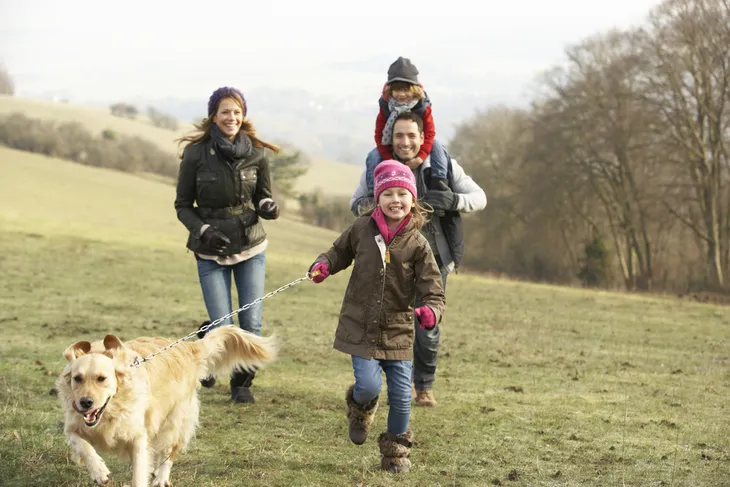It’s not too uncommon to slowly slide into sedentary behaviors once the honeymoon stage of puppy ownership wears off. While some dog owners are relentless with their walking rituals, others may lean on the backyard or a dog park to exercise Rover. Whether it is lack of time, chronic fatigue, or ugly weather, many times the walking of the dog becomes just another chore to get done. It’s not surprising to many that the research on physical activity and dog ownership suggest that those who own dogs get the prescribed physical activity for health (150 minutes per week) without too much hassle.
Dogs are the greatest personal trainers and help us get off the couch when we would rather watch another episode on Netflix. There are times, however, when the rain, schedule, or overwhelming fatigue wins out. When those times hit us, it may do us some good to remember the many benefits that come to us once we are able to step outside the door with our furry best friends…
1. Walking is the Best Form of Exercise
The latest research on exercise suggests that walking (not running) is the best form of physical activity for many reasons. From the low impact aspect to the accessibility of walking, all we need is 30 to 60 minutes a day to realize the benefits of walking. Additionally, we can divide this time across our schedule to include a morning and evening walk adding up to 30 (or so) minutes.
From lowered rates of depression and stress to a stronger immune system (and maybe a few pounds lost) walking every day is one of the smartest things to do for our health. Not only that, we have bonding time with the dog while pooping out the pooch.
2. A Connection to Nature
We are the fortunate ones if we live close to a hiking trail or a park knowing that maintaining a connection with nature can improve mood and decrease feelings of depression. However, should we not have this access and find ourselves surrounded by concrete do not despair. Finding a small patch of grass or tiny park can do the trick.
Researchers examining the relationship between a connection with nature and mental health have noted higher rates of depression in children who aren’t exposed to nature versus those that adventure out in it on a regular basis. A healthy dose of nature can also reaffirm our commitment to living a sustainable lifestyle.
3. Animal Therapy
As the understanding of the emotional benefits of animals grows, we will see pets and therapy dogs integrated in places we never saw before. Animals are finally getting the notoriety they deserve for being important companions and family members. Research demonstrates a lower blood pressure and heart rate in people after petting an animal while caring for pets helps to teach us about compassion and empathy.
Additionally, research has suggested that by hanging out with our dog or cat we release more “feel good” chemicals in the brain and enjoy a more elevated mood. Let’s face it; no one can stay in a bad mood when sitting in front of a box of puppies.
4. Social Connection
There is nothing that bonds people more efficiently than when they talk about their dogs. In fact, dog park groups may learn the dog names before the owner names. For those of us living alone, this may serve as an outlet for social connection.
A study published in Anthrozoos (a journal of the interactions between animals and people) examined older adults living in mobile home parks and found that those who walked their dogs had more conversations with other dog owners and focused on the present more often than those who didn’t own dogs.
5. A Healthy Puppy
As we would imagine, the same health benefits we experience with walking, our dogs will experience too. From weight management and enhanced cardiorespiratory health to socialization with others (dogs that is) along with a well behaved, well socialized pup, walking benefits us both.
In addition, daily walks can offer training opportunities to enhance Rover’s obedience and ease of the walk experience. No one looks forward to walking a poorly behaved dog and all it takes are a few favorite treats and a small amount of patience.
6. Great Stress Management Tool
There is nothing more effective to reducing stress than going for a walk after a hectic day. While we could chose to sink into the couch and pull the throws over our heads (while ruminating over the events of the day), picking up the leash instead will help to redirect out focus and thoughts to something more healthful and positive.
Add some dog park social connection or a walk in the woods and we have the perfect stress management plan to help us get through those times when we would otherwise drown ourselves in a bucket of chicken.
7. A Family Friendly Activity
There nothing less surprising than a child promising to walk their puppy and losing all interest a few months in. Walking the dog together may not only provide some additional physical activity into an otherwise sedentary day, but strengthen the family connection (provided we are able to pry the smart phone from those tiny hands).
Family therapists often suggest adopting a family pet as a way to bring blended families together. Sharing the responsibilities of walking, grooming, feeding, and caring for a family pooch can offer a single focus to an otherwise disjointed family. It is important to note, however, that it is vital to take stock of the realities of adopting a pet to ensure it’s a healthy fit between the family and Fido.










